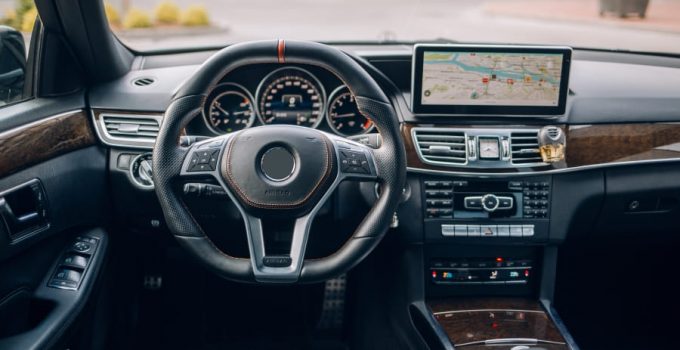
G-Tronic is a series of automatic transmissions that are manually operated can be sent to Mercedes-Benz– as well as on SsangYong vehicles. In 1981 the first G-Tronic, a 4-speed automatic transmission, was presented. Nowadays the manufacturer produces a 9-speed G-Tronic gearbox. These are exclusively in-house developed transmissions from Daimler AG. These gearboxes are characterized by reliability, excellent performance and the ability to transmit high torque.
How G-Tronic works
G-Tronic is based on classic automatic transmissions equipped with a hydraulic torque converter and electronic control. It has been fitted with a torque converter lock since the 1990s. This initially allowed the driver to select the highest gear (one or more higher gears could be excluded). It later allowed full manual mode for all subsequent generations of automatic transmissions.
Generally, these transmissions have several automatic modes, including Sport, Comfort, and Eco. The driver selects the desired mode via a button, a special switch or a selection button on the center console. To switch to manual mode, move the shift lever to the “D” position and then slide it to the left to the “-” sign. This engages the current gear. You can then shift to a higher or lower gear in the “+” or “-” direction. In addition, it is also possible to shift gears manually using a paddle shifter (if the vehicle is equipped with one).
Popular G-Tronic transmissions
| Version | Gearbox code | Number of gears | Max engine capacity, L | Max engine torque, N⋅m | Production start | Car layout | Mercedes-Benz models | SsangYong models |
| 4G-Tronic | 722.3 ( W4A040) | 4 | 6.0 | 570 | 1981 | RWD | S -Class W126; E Class W123; S Class W140; SL R107; E Class W124; SL R129 | ― |
| 4G-Tronic | 722.4 (W4A020) | 4 | 3.0 | 250 | 1981 | RWD | S-Class W126; E Class W123; C Class W202; E Class W124 | ― |
| 5G Tronic | 722.6 (W5A330, W5J400, W5A580) | 5 | 3.5; 4.3; 6.0 | 350; 420; 580 | 1996 | RWD, AWD | C-Class W202; S Class W221; C Class W204; E Class W211; C Class W203; E Class W212; M Class W163; S Class W140; S Class W220 | Rodius AJ; Rexton Y200 |
| 5G-Tronic | 722.7 (W5A180) | 5 | 1.9 | 205 | 1998 | FWD | Vaneo W414; A-Class W168 | ― |
| 7G-Tronic | 722.9 (W7X550, W7A700, W7B700, ) | 7 | 3.5; 5.5; 6.3 | 550; 700; 850 | 2003 | RWD, AWD | C-Class W204; S Class W221; E Class W211; S Class W220; M Class W164; C Class W205; E Class W212; M-Class W166 | Chairman W |
| 9G-Tronic | 725.0 (NAG3) | 9 | 6.7 | 1000 | 2013 | RWD, AWD | C-Class W205; GLE W166; S Class W222; E Class W213; GLS X166; CLS W218 |
Common defects of G-Tronic
| Defects | Transmission |
| Clogs in the transmission oil cooler cause the transmission to overheat. | 722.4 (W4A020); 722.3 (W4A040) |
| A spring in the reverse clutch system has failed. | 722.3 (W4A040); 722.4 (W4A020) |
| The vacuum modulator valve fails frequently. | 722.4 (W4A020); 722.3 (W4A040) |
| A bushing between the transmission shafts is not strong enough and often fails. | 722.6 (W5A330, W5J400, W5A580) |
| The valve body solenoids become clogged with clutch wear debris. | 722.6 (W5A330, W5J400, W5A580) |
| The torque converter lockup solenoid stops prematurely to function properly. | 722.6 (W5A330, W5J400, W5A580) |
| Often a valve housing board breaks. | 722.7 (W5A180 ); 722.9 (W7A700, W7X550, W7B700) |
| Damage to one of the clutch drums. | 722.7 (W5A180) |
| Vibrations from aggressive driving cause severe damage to the transmission case. | 722.9 (W7B7000, W7X550, W7A70) |
| The transmission will not function properly if the gear oil is dirty or not replaced in time. | 725.0 (NAG3) |
